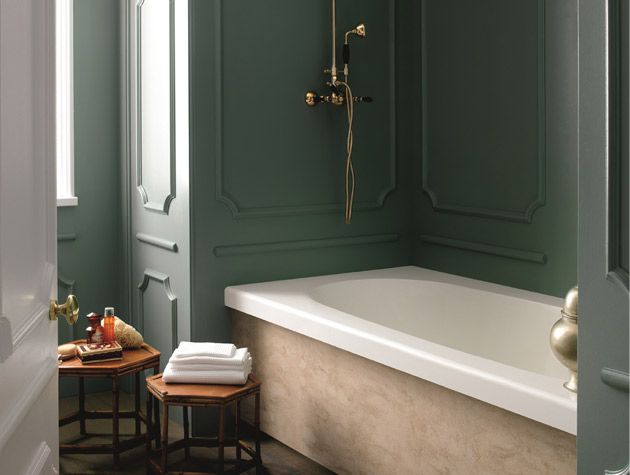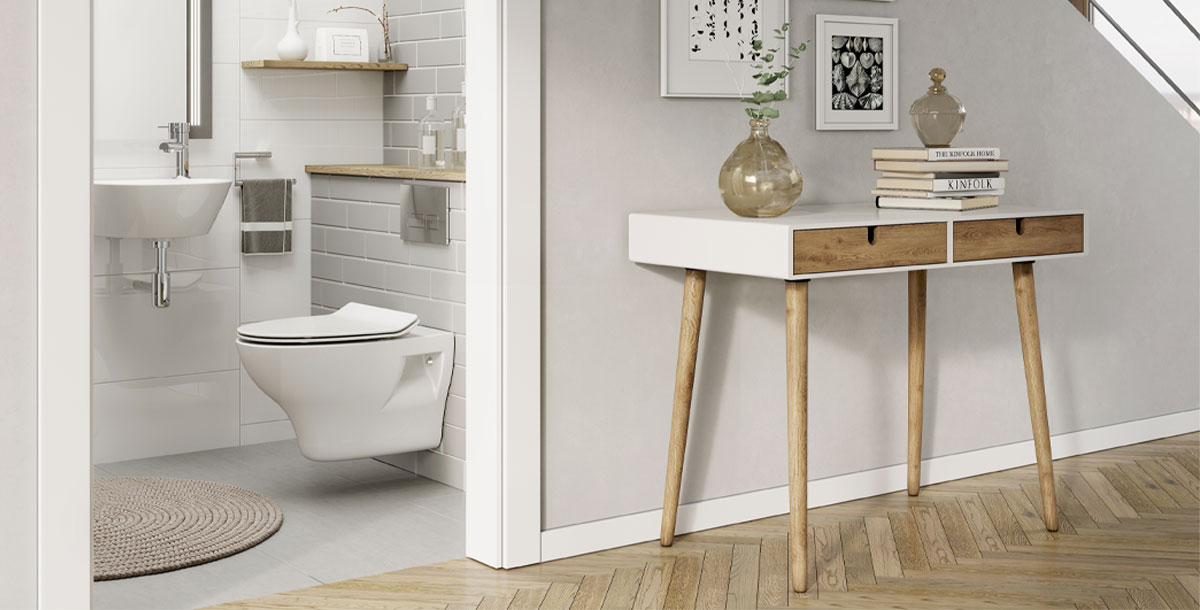An easy guide to adding an en suite
After a new retreat? It’s easier than you’d think to add an en suite to your home
Unlike a shared bathroom, an en suite is the ultimate retreat; a space you can claim as your own. Adding an en suite successfully to your existing property can be a straightforward process – it’s a case of weighing up space versus practicality, planning carefully and incorporating smart solutions.
While every home is different, it pays to follow a few basic rules. Define a clear reason for creating your en suite; keep the design as simple as possible, and work out which features are essential to making the space work for you.

Photo: Archic
Possible locations
The obvious place for an en suite is adjoining, or as part of, a main bedroom. This may mean converting an adjacent room, sectioning off space from another room or the main bedroom, or creating it within the bedroom with either a stud partition wall to divide it, or no wall at all.
When thinking about taking space from an existing bedroom, look at parts of the room that are rarely used, such as fitted wardrobes, awkward corners or unused areas – all are ideal for repurposing. Then research what kind of structural work you can undertake, which walls are load-bearing and the costs of moving or removing walls.
If you’re thinking about sacrificing a whole bedroom, check if this will add or detract from your property’s value. Local estate agents can usually advise on this. However, if you plan to live in the property for several years, any drop in value may be off set by convenience.
‘If you have a small spare room or box room adjacent to your bedroom, and rarely have overnight guests, the space will serve you much better as a bathroom that is used on a daily basis,’ says Charlie Borthwick, founder of Cue & Co of London. As a guide, you’ll require an area measuring at least 0.8×2.1m to accommodate a shower, WC and basin.
Loft conversions are ideal for a main bedroom with en suite, but you’ll need to take into account the low ceiling height when deciding where to install a shower. Plus, you may have to fit a pump or macerator depending on the location of your plumbing.

Photo: InHouse Ltd
Practical Points
Fitting an en suite rarely needs planning permission, but is likely to require Building Regulations approval to ensure that any wiring, windows, ventilation and drainage comply. Some trades people can self-certify their work – check the competent persons register.
Plumbing is the main consideration for an en suite; check how easy it is to re-route supply and waste pipework. Ideally, the soil pipe will be nearby so that waste water can be taken away easily. If the existing boiler is a long way from your en suite or it doesn’t have the capacity to feed an extra bathroom, you may need an additional hot water supply.
‘Consider the structure of your walls,’ advises Chris Taylor, design expert at Bristan. ‘A bathroom wall is typically constructed using studwork with a metal frame to support wall-mounted basins and a WC, while the cavities are used to conceal the bodies of mixer taps and showers. If your new space has brick walls throughout, this will affect whether the room is usable.’
‘Older properties can be easier when it comes to installing plumbing,’ explains Dena Kirby, designer at Ripples. ‘Wooden joists under the floorboards of period buildings provide an accessible space to run waste pipes. Newer properties usually have more options for the layout, but it’s more difficult to hide water and waste pipes.’

Photo: Mark Taylor Design
You can minimise disruption and costs by keeping all the plumbed items on one wall, or by building your en suite next to an existing bathroom, so that drains and water supplies can be shared.
Adequate ventilation and heating are essential to prevent steam damaging the bedroom. ‘It’s best to extract directly to an external wall,’ explains Linzi Kettle, interior designer at Granit. ‘If this isn’t possible, you will need to run a longer extraction tube, potentially through other rooms.’
Design and Layout
Start by deciding where to position the larger sanitaryware items; whether you need a shower, bath or a combination, and then plan furniture around these. Ensure there’s enough space to use these features comfortably.
There should be adequate room either side of and above the WC to access the room and enough space to be able to stand in front of the basin.
‘It’s important to consider the practicalities of using the en suite,’ says Graeme Dryden, technical services manager at APHC. ‘For example, you don’t want to burn your leg on the radiator when using the WC or fit a shower that’s too small to move around in.’ If space is tight, choose short-projection WCs, small basins, wall hung sanitaryware and scaled-down furniture.

Photo: Corian
‘An existing recess at the end of a narrow room is a popular position for a space saving shower,’ says Nicholas Cunild, MD at Matki. ‘Choosing the most suitable door style should be a key consideration. Sliding and infold doors allow for other bathroom furniture to be positioned near the entrance to the enclosure. Pivot doors can be used in the same way as some open outwards as well as inwards.’
If your en suite is part of your bedroom, you may want to zone off some parts of it, enclosing the WC with a stud wall or behind an opaque glass partition, for example. This will add a layer of privacy, while keeping a light, open feel.









